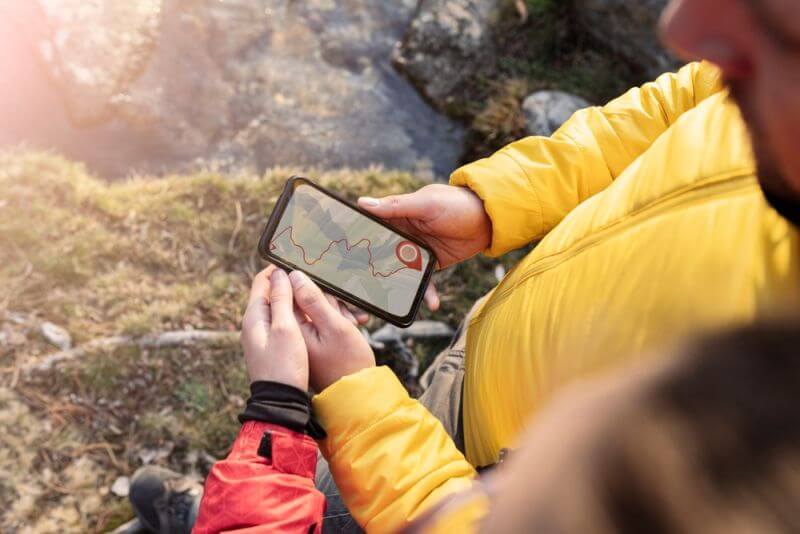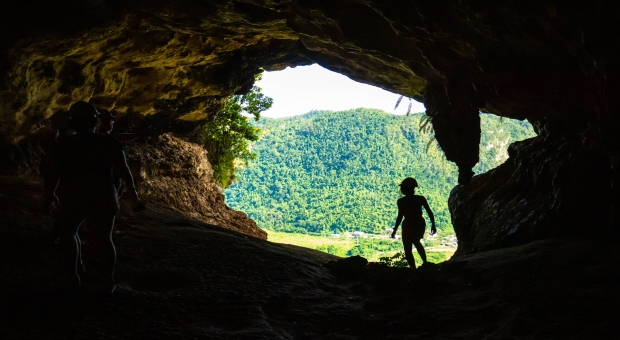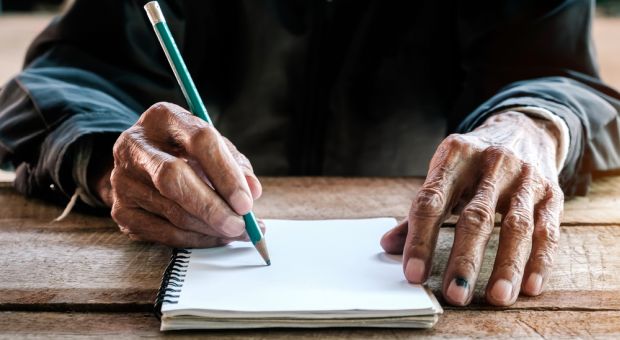I don’t know about you; but references are important to me. Even though I write, talk, and experiment about survival full-time, I can’t remember all the finer details of many things I know. I count on references for everything from herbal medicine, to how recipes for various household chemicals, to how to build a snare. I guess it’s the engineer in me, not wanting to count on my memory, which can fail at times.
A faulty memory really isn’t much of an issue these days, with computers and the internet. Google is ready and willing to help us with anything we forget, even if their answer isn’t always the one that we want. For the rest, how doesn’t keep notes on their phone or computer these days?
But what are we going to do when the power goes out and we can’t get into our computers, let alone the internet? You can be sure that the time that will happen, is when you need that information the most, right in the middle of a crisis. Then, all those things you had bookmarked for such an emergency will end up being useless to you.
This is when you’re going to be wishing that you had all that information in old-fashioned books, readily available, even if it might not be as convenient in paper form, as it would be in electronic form. But then, if that electronic form isn’t usable, the paper form is going to be much more convenient.
Some Basic Rules for Building a Library
What I’m talking about, in building a library isn’t necessary buying books, although there’s nothing wrong with owning books. In fact, there are some books that you should own, such as “Where there is No Doctor” and “Bushcraft 101.” But mostly I’m talking about collecting information and putting them together as your own books. That allows you to build books that only have the information you really need, rather than just having books filled with information you’ll never use.
None of us ever manage to learn everything we read 100%. Mostly we catch the highlights. At some future point in time, we need more than just those highlights and have to go hunting for the information all over again. I’m constantly on the lookout for articles and other references like this, which become part of my books. This is constantly in the back of my mind, as I’m reading and studying.
In my experience, most books have very little information that I need to reference, once I’ve read that book. So, what I’m really after, is saving that information; not the whole book. By saving the key information, I save on space, as well as making it easier to find what I’m looking for.
I use three-ring binders for this, because they allow me to organize the information, so that I can find it easily. Each binder covers a single topic area, like food, health or wilderness survival. Whenever possible, I print things on both sides of the page, saving space for more information. The things I’ve printed out and saved are organized by subject, with dividers for each subject. The first page in each section is an index of what’s in it, so that I can find things easier.
This idea actually started back when we moved into a motorhome. My wife at the time had a shelf full of recipe books, each of which she used no more than three or four recipes. Rather than try to take those books with us, in our limited space, we just took the recipes we needed, put them together in two notebooks and got rid of the library of recipe books.
Major Information Sources
Most of the information you’re going to put into those notebooks is going to come from things that others have published. That can mean books, articles, charts or diagrams. Before deciding to keep something, make sure you understand what it is and are sure that it is information that you can use. There’s a lot of good-looking information out there, that once you get into, doesn’t help you at all.
Let me give an example of what I mean – bug out bag lists. There might be a couple hundred bug out bag lists out there, floating around the internet. But most of them contain the same information; so, having several is a waste of time. On the other hand, each might have one thing that others miss, meaning that the list has some value. Still, printing them all out and putting them in one of your notebooks just means that you’re going to have a notebook filled with repetitious information.
It can be useful to see what people put on those lists. Every once in a while, you see something you hadn’t thought of before. But that doesn’t mean you need to print them all. Rather, create a compiled list of your own, taking the best ideas from everything you’ve seen and putting it together.
Using extracts like that or even just taking a chart you find in a book or article, can provide you with the key information you need, in a compact form. I like to add charts to my library, because they contain a lot of information in a small amount of space. US copyright law does allow you to make copies of copyrighted material for personal use, under the “fair use” clause of the law.
Rarely do I print an entire article to put into my notebooks. Rather, I excerpt the section that I need and put it into my word processing program. That then allows me to format it in a way that will be easy to use, while avoiding space that is wasted by headers, ads, poor formatting and large type.
Basic Categories
While this list is not complete, here are some basic categories that would be useful to include in your library.
- Food and food preservation
- Recipes using the foods your store – be sure to include recipes for things like bread, that you don’t normally make
- Herbal medicines – this can be a whole book, including how to use the herbs, what to use them for and where to find them
- Hunting, fishing and snaring – how much you need here will depend largely on how much hunting and fishing you do. Be sure to include information on how to butcher animals
- Wilderness survival references – this can include anything from how to build a shelter to a guide to edible plants. Mostly, you want information that you don’t have memorized
- DIY survival projects – especially for those projects you never got around to doing
Add Your Own Information
Your notebooks shouldn’t just contain information that you find on the internet. There’s a lot of personal information that you should be developing yourself, dealing with your own survival plans and strategy. You’ll want to have this information recorded and printed out, so that you have it available to you, when the time comes to use it. Ultimately, this is probably going to be the part of your survival library that you end up using the most.
Stockpile inventory – Start out with an inventory of what you have in your stockpile, as well as where everything is stored. Your inventory should not only include what you have, but a calculation of how much you need. Take flour for example. You should figure out how much bread and other baked goods you’re going to make per week or per month. Based on that, you can calculate just how much flour you need per month, pre quarter and per year. Knowing this, as well as how you calculated it, will help you build your stockpile, as well as remember how you planned on using it, when the time comes.
Resource lists and maps – Besides the supplies you have in your stockpile, you should be looking around to see what other supplies are available. Create lists and maps, showing this information, so that you can find those sources.
Survival team – Contact information, as well as other basic information about everyone in your survival team. Include people who aren’t in your team, but could be useful to you, such as medics, gunsmiths and people with other useful skills.
Survival plan – Some sort of basic plan that talks about who is going to do what, during a time of crisis. This will probably need to be broken down into immediate tasks, ongoing tasks and bug out tasks.
Bug out plan – We all need a bug out plan, including a destination, lists of things to take with us and the route we’re going to take to get there (with alternates). Writing the plan down makes it so that you don’t have to remember all the details.
Repair information for your gear – Repair manuals can be very useful for more complex survival gear, as well as parts diagrams, parts lists and exploded views. You’ll eventually need to repair something and it will be much easier to make those repairs if you have this information.
Recipes for making household chemicals – Much of what we use as cleaners and other chemicals around the home will run out; but can be made if you know how and can come up with the basic ingredients.










Melanie | January 4, 2023
|
I am happy to have stumbled across this! I am a information “hound” or hoarder of your my husband! Ha! I have loads of great books and info downloaded that I’ve been telling myself to get organized!!! Now! I have so much that it’s overwhelming and I keep procrastinating because of that!
This article will definitely help to get me started with your suggestions!
Thank you for the time you put in to help other like minded people!! It’s coming! The first quarter of this new year will bring full blown recession and the chaos will truly begin! God help us all and blessings of protection to all!!
Frank C. | January 10, 2023
|
Great artical. This is the first one I was compel d to comment on. I have collected a wide range of articals, books and videos over the years, encompassing many areas of Survival, How To s, etc. A lot of them came from ‘Survivopedia’ and ‘Ask a Prepper’. They are informative and helpful, even the Comments takes it a step further or were the author either missed something or got it wrong. But, once you filter out the ‘Personal Opinions and Non-Relative information and random conversations’, it’s all good.
When the time comes (SHTF), depending on the circumstance +/or situation your faced with; Getting or having access to your Library might become a problem.
EMP – all electronics, cell phones, internet and “Wi-Fi”, are all dead. Hey, building a ‘Faraday Cage’, to save your electronics, might be a good idea.?.
Bugging Out – Books and binders are too bulky, when considering Space and Mobility. But could be good for starting fires.
This is just naming a couple of situations.
Having considered this… I have put my Library onto a portable Hard Drive, and when possible placed digital copies of books, and personal information I want to keep, as well.
All this is placed into a FARADAY Cage, along with a small notebook style Laptop +/or a Tablet, all cables needed as well as a Solar panel to charge it all.
All of which can and will fit into a BugOut Bag. The solar panel I have is the size of the laptop, with 4(four) folding panels, that generates 40W of power.
John M. | January 11, 2023
|
I not only have paper copies, I also have info on USB drives that I can use on my tablet. I have several ways to keep it charged and a charge lasts a long time. I have paper maps to my 3 bug out places as well as printed directions. I have at least 3 routes to each place and do them often to look for any changes that might be happening (construction, closed roads or other problems). I go to one of my places every month and use a different route each trip. Thanks for the info.
Kate Bloodworth | January 22, 2023
|
Thanks Bill – this was a great article! I actually have mine saved in folders on my computer and since it runs on my generator I am in good shape. But definitely going to use the topics you mentioned. They were on the money.